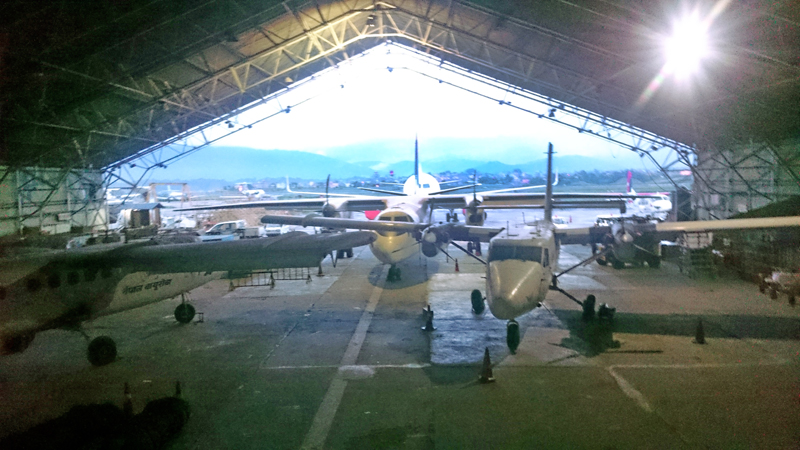Rubber deposits at TIA runway pose threat to aircraft safety
Kathmandu, July 30
With equipment lying in a state of disrepair, the country’s sole international airport continues to operate with ever-accumulating rubber deposits at the southern end of its only runway, creating conditions that could make a landing aircraft lose directional control and make undesired runway excursion in the rainy season.
Stakeholders said sheer negligence on the part of Civil Aviation Authority of Nepal has turned a water pressure rubber-deposit removal machine dysfunctional, leaving the runway threshold at Tribhuvan International Airport soiled by rubber deposits.
Researches show that an average aircraft landing leaves 700 grammar rubber in a thin layer on the runway. Senior Captain YK Bhattarai said piling rubber deposits on the runway designated 02, where most arriving jet aircraft make first ground contact, could cause aircraft not only to skid, but also lead to engine damage with possible fatal consequences. “It’s very risky mainly in the rainy season,” he added.
Deputy Director General at CAAN Mahendra Singh Rawal admitted TIA had failed to use a water pressure rubber-deposit removal machine purchased a few years ago. “A process has, however, been initiated to rent a machine from abroad,” he told this daily.
Rubber deposited in the touchdown zone by tires of landing aeroplanes obliterates runway markings and, when wet, creates an extremely slick area on the runway surface
Snow, slush, ice, standing water, mud, dust, sand, oil, rubber deposits and other contaminants shall be removed from the surface of runways in use as rapidly and completely as possible to minimise accumulation as per the ICAO stipulations
TIA, which bought two runway-friction measuring machines from abroad, failed to operate them. The responsible officials have already pocketed the incentives that come along — all paid foreign trip and a handsome commission, a TIA official recounted.
The aeronautical information published by CAAN also reveals there is no specific mechanical device used to measure friction, though the International Civil Aviation Organisation requires the aerodrome services provider to inform airlines about the nature and state of the runway and formally specify through appropriate publication the friction values, below which the runway is declared unusable for traffic.
“However, during rain/snow, a thorough runway inspection has to be made by the airport authority and the runway surface condition be expressed as damp, wet water patches and even flooded as appropriate and thereby, the runway may be declared slippery and unserviceable for safe landing /take off, depending on the conditions,” stated CAAN’s publication.
Considering TIA with its single runway as sole-bread earner, CAAN is responsible for maintaining the aerodrome satisfactorily for flight operations, but the current state of the runway and its maintenance leaves a lot to be desired, the stakeholders concluded.






